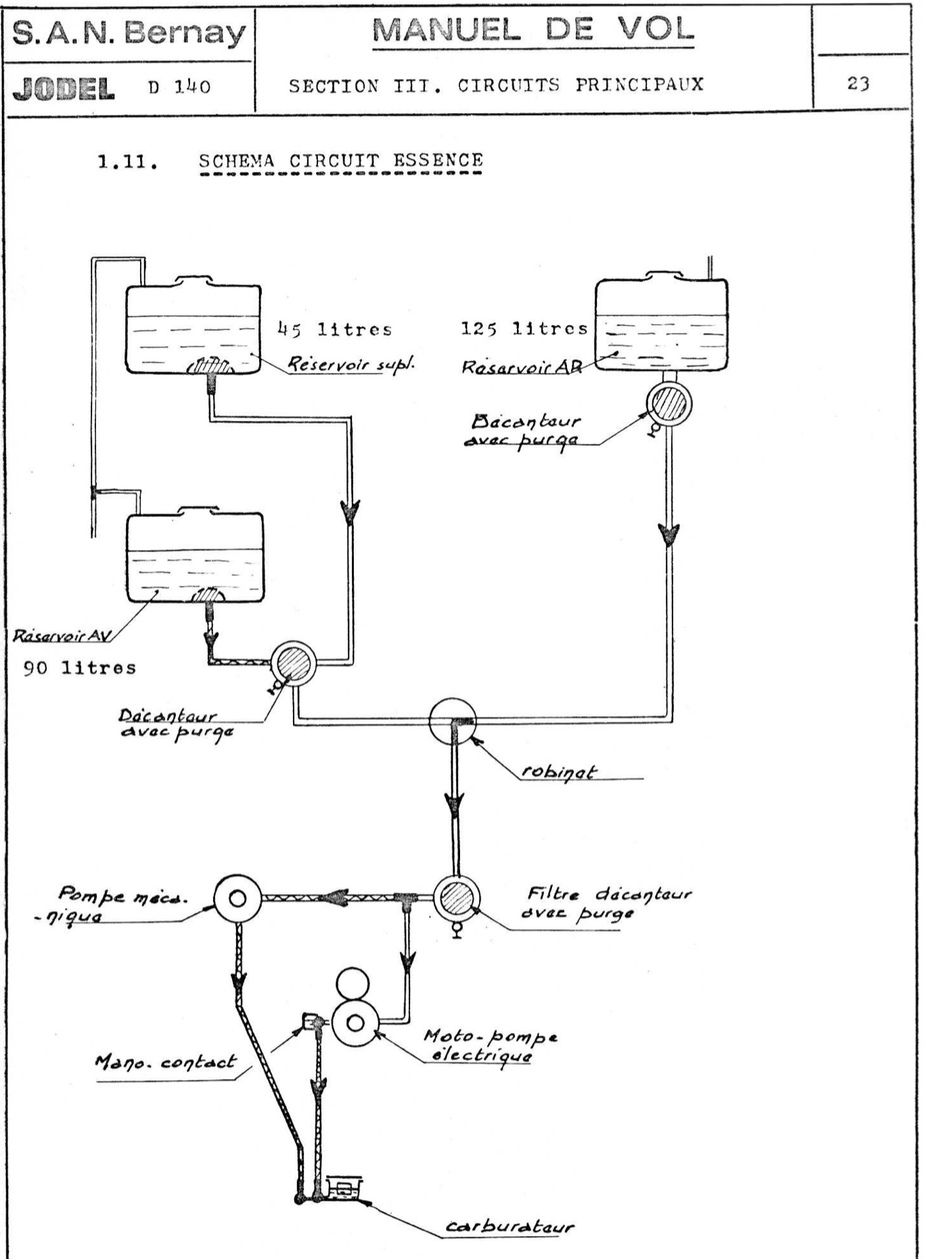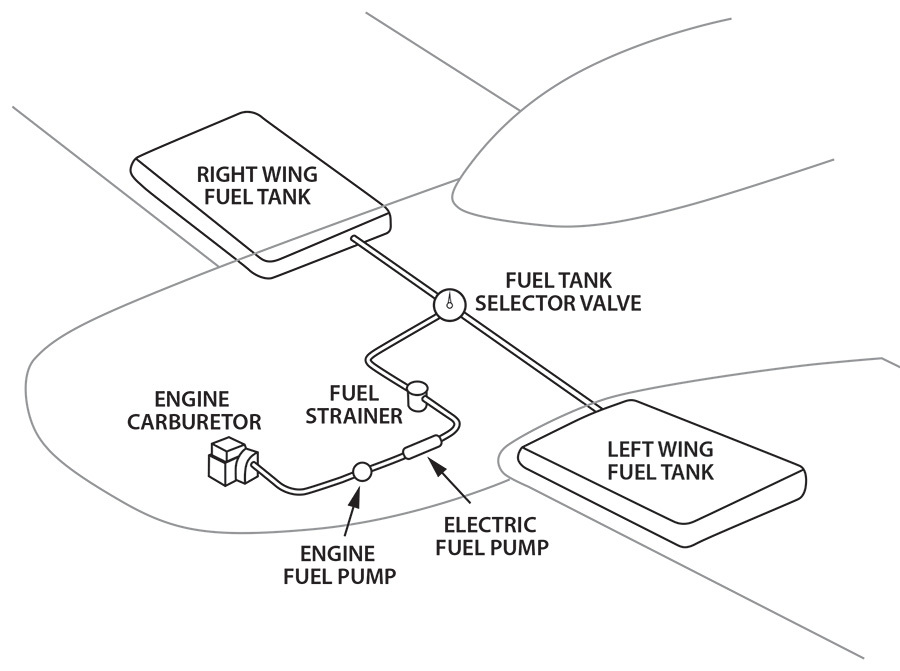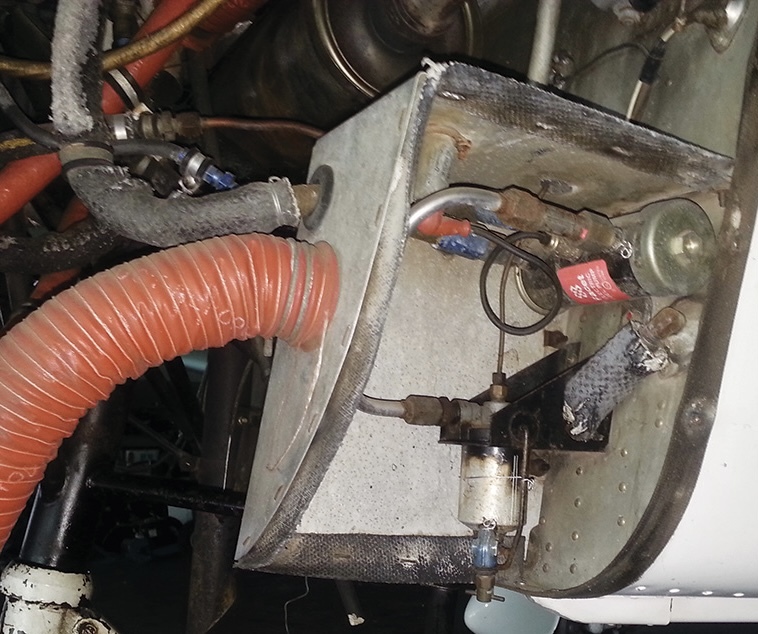I am amazed how these fuel systems work. I mean, if you suck on a pipe with liquid, eventually you will reach the vapour pressure, and then nuffink comes up the pipe 
Obviously the design (assuming there was ever a “design” – this is not assured  ) assumes that the fuel has a certain vapour pressure, below which there will be too much of a “hill” to suck it up.
) assumes that the fuel has a certain vapour pressure, below which there will be too much of a “hill” to suck it up.
I know from water pumping scenarios that you can suck water up a pipe of somewhere around 5-10 m, but then water at +25C has a vapour pressure of just 24 millibars. Avgas can be up to 500mb, and “car petrol” according to google is “range of 8 to 14 psi” which is awfully close to sea level air pressure!
With the gascolator behind the engine a likely vapour lock spot, due to temperature, the more suction the greater the likelyhood of vapour lock.
Neither of the aircraft being compared are fuel injected so regardless of which pump is in use the fuel pressure is something like 4 psig.
My carbureted plane’s fuel system incorporates check valves to allow parallel versus series flow. I haven’t looked further into it to determine how the mechanical and electrical pumps internally bypass (or not), and why the Jodel diagram does not show similar check valves. The Bendix/Facet (reciprocating?) pump shown in the Cherokee fuel system photo is available in a number of configurations that look the same externally.
Why do most low-wing aircraft have the pumps in series and not in parallel?
The engine driven pump (the “high pressure pump”) can fail, and fail open, hence the need for the electric pump in series.
In fuel systems where there is no tank return, the electric pump (which is a gear pump) needs to have a spring loaded bypass inside, AFAIK, because the fuel servo needs a constant pressure feed. Its regulator could not stop a constant-volume feed.
aart wrote:
It may have to do with the fact that, when placed in series, one can quickly remedy air bubbles by providing extra pressure and flow of proper fuel by switching on the aux pump, see my post above. When in parallel, there would be a part of the fuel system that could continue to contain bubbles which you may not want?
Only if the downstream pump is able to provide increased pressure over that of the upstream pump, which is by no means certain and wold depend on e.g. the design of the pump. But perhaps all pumps used in a downstream position in aircraft fuel systems work that way?
My question would be the opposite. Why do most low-wing aircraft have the pumps in series and not in parallel? On the face of it, the D140 system seems most natural.
It may have to do with the fact that, when placed in series, one can quickly remedy air bubbles by providing extra pressure and flow of proper fuel by switching on the aux pump, see my post above. When in parallel, there would be a part of the fuel system that could continue to contain bubbles which you may not want?
In the Bristell, the aux pump which is upstream from the engine-driven mechanical pump, has a by-pass circuit including a check valve so failure of the aux pump is not an issue. And I’m assuming that failure of the mechanical pump does not pose a risk either in that the aux pump will pump ‘through’ the mechanical pump, or there is a by-pass as well, need to check.
I think perhaps it seemed the natural thing to do.
We were taught that the electric fuel pump is used in place of the gravity and priming that would have been used on high wing aircraft.
Therefore you switched it on to start the engine and off again once it had started. Then on again just for take off, off once established in the climb at around 500ft. Under normal conditions It would be switched on again in the downwind and off once touched down.
With the D140 and its contempories
Messieurs Joly and Delmontez were coming from a postion of no electric fuel pumps at all. You simply hand swung the prop on the D112 for instance. They had no computers to do modelling and no big money behind them so they relied on their own experiences and intuition. It is difficult to analyse that.
Jacko wrote:
Can anyone hazard a guess as to why Messrs Joly and Delmontez plumbed the D140 electric and mechanical fuel pumps in paralell … rather than in series … as usual in most low-wing aircraft, such as this PA28:
My question would be the opposite. Why do most low-wing aircraft have the pumps in series and not in parallel? On the face of it, the D140 system seems most natural.
My guess would be that the electric pump used by Jodel does not permit flow through the pump when it is non-operational. Or they were concerned about the potential for blockage and the corresponding benefit of parallel flow paths.
Can anyone hazard a guess as to why Messrs Joly and Delmontez plumbed the D140 electric and mechanical fuel pumps in paralell:

rather than in series:

as usual in most low-wing aircraft, such as this PA28:
